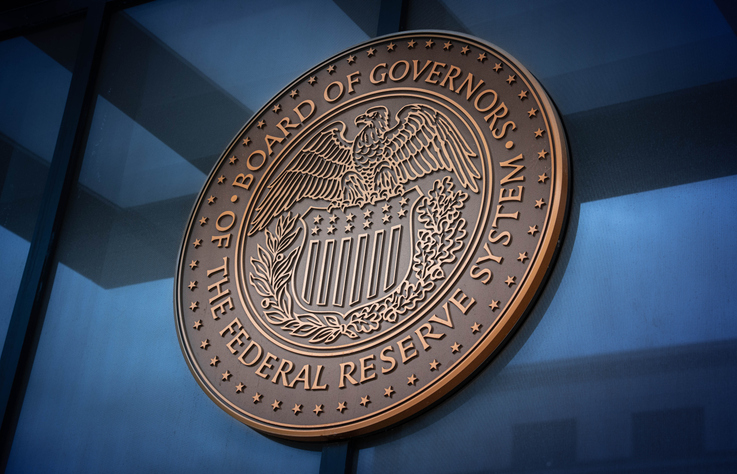Toward a “new normal” for bonds?
Global bonds markets appear to be in a state of structural volatility. While inflationary pressures and fiscal concerns are the most oft-cited factors, the apparent failure of the markets to adapt their expectations could be just as significant.
In September 2024, the Fed embarked on what looked to many market participants like the beginning of a rate-cutting cycle, slashing rates by an emphatic 50 basis points. Two 25-basis-point cuts followed in November and December, bringing the target Fed funds rate range down to 4.25-4.5%.
However, the last Federal Open Market Committee (FOMC) press conference suggested a change of heart at the Fed. Chair Jay Powell warned against expecting too many more cuts while stating that the Fed was closer to the neutral rate. These comments reflected a revised “dot plot” that suggested members were cooling on the need for further cuts. This surprised the markets, which duly sold off hard.
This was by no means the first time in recent years that the market has been wrongfooted by a central bank decision. In fact, such “surprises” have become a feature rather than a bug since the Fed began its aggressive rate-hiking cycle in early 2022, breaking with the period of zero (ZIRP) or negative interest rates (NIRP) that had prevailed over the previous decade. The pattern is not unique to the US but has been observed across developed markets. Why does this keep happening?
*
This article is part of our weekly series, The Intuition Finance Digest.
Listen to the series on Spotify, Amazon Music, or Apple Podcasts.
*

Inflationary pressures & fiscal concerns
Much bond market volatility can be put down to the “usual suspects” of inflationary pressures and fiscal concerns. The inflation that took shape after COVID-19 – forcing central banks across developed markets (except for Japan) to aggressively hike rates – has proven “stickier” than anticipated. While inflation has almost certainly peaked, it has declined more slowly than many expected, and some of Trump’s policies – notably on tariffs – have given rise to some fears of a rebound.
Fiscal concerns have arguably been a greater driver of the more recent episodes of volatility than inflation, as suggested by the greater pressure on the long end of the curve. Elevated government debt levels tend to drive bond yields higher (and prices lower), particularly against a backdrop of still-elevated inflation. It’s no accident that volatility has been most pronounced in jurisdictions where public debt is high and rising, notably the US and the UK where public sector debt, as measured by debt/GDP, has breached the 100% level.

Idiosyncratic regional woes
Bond markets in other jurisdictions are beset by different sets of problems.
Europe seems to be experiencing an upending of the established economic order, with the periphery – in particular, Spain and Portugal – performing much better than the center. France is facing fiscal pressures similar to the UK and the US, exacerbated by political turmoil.
Germany’s economy, having long been the industrial powerhouse of Europe, has suffered considerably through the loss of its access to cheap Russian energy since the Ukraine invasion in 2022, as well as the “own goal” of decommissioning its nuclear energy production. Germany could use lower interest rates to restore competitiveness but is at the mercy of the ECB, which sets rates for all eurozone members.
China is at the opposite end of the spectrum to the US and the UK, with a domestic economy plagued by the debt overhang from its real estate bubble, facing the prospect of vast unrealized losses that the banking system has yet to recognize. This is reflected in an inexorable decline in Chinese government bond yields, as money flows to the safety of Chinese sovereign bonds.

Market expectations & ZIRP/NIRP conditioning
Another significant driver of bond market volatility has been the failure of market participants to adjust their expectations.
While central banks have taken considerable heat for perceived shifts in their dot plots, forward guidance, and so on, they’ve been notably more consistent than the market. The market was behind the curve throughout the rate hike cycle of 2022, underestimating the pace and extent of tightening.
Similarly, during 2023, the market consensus called for recession and drastic cuts in interest rates. However, central banks (in particular, the Fed) held firm in their relatively hawkish stance. Central banks were ultimately vindicated in the first half of 2024, when both the economy and inflation continued to deliver upside surprises, proving the market wrong again.
This pattern suggests that consistently flawed market expectations, rather than central bank actions, have driven much of the volatility. The flawed expectations may be the result of conditioning during the ZIRP/NIRP age, which bred a tendency to underestimate rate hikes and overestimate cuts.
Toward a new normal?
Periods of volatility, such as that being experienced in global bond markets, don’t last forever – eventually a new equilibrium is reached. This period of transition may therefore be best understood as the market adjusting to that equilibrium, or “new normal”, which would entail the eventual establishment of a neutral interest rate or interest rate range. For now, neither the central bankers nor market participants know what “neutral” means. Getting there may also require the market’s collective memory to move beyond the decade or so of ZIRP and NIRP – a period that was anything but normal.

Intuition Know-How has a number of tutorials relevant to the content of this article:
- Bond Markets – An Introduction
- Monetary Policy
- GDP Indicators
- Yield Curves – An Introduction
- Economic Indicators – An Introduction
- Fiscal Policy Analysis
- Inflation Indicators
- Financial Authorities (Europe) – ECB
- Financial Authorities (US) – Federal Reserve
Learn more about Know-How
Fill in the form below to view all tutorials and courses offered within Know-How.


